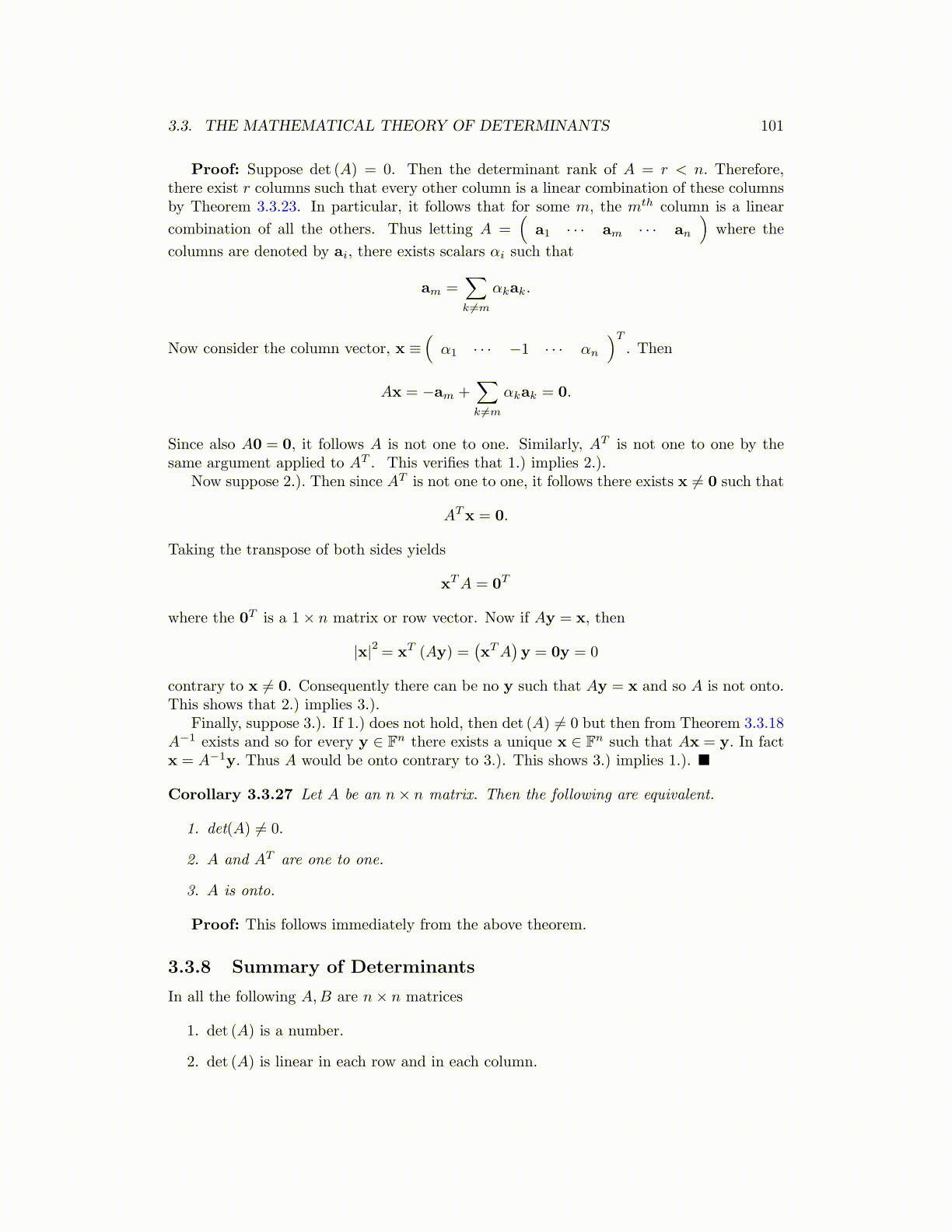
3.3. THE MATHEMATICAL THEORY OF DETERMINANTS 101
Proof: Suppose det (A) = 0. Then the determinant rank of A = r < n. Therefore,there exist r columns such that every other column is a linear combination of these columnsby Theorem 3.3.23. In particular, it follows that for some m, the mth column is a linear
combination of all the others. Thus letting A =(
a1 · · · am · · · an
)where the
columns are denoted by ai, there exists scalars αi such that
am =∑k ̸=m
αkak.
Now consider the column vector, x ≡(α1 · · · −1 · · · αn
)T. Then
Ax = −am +∑k ̸=m
αkak = 0.
Since also A0 = 0, it follows A is not one to one. Similarly, AT is not one to one by thesame argument applied to AT . This verifies that 1.) implies 2.).
Now suppose 2.). Then since AT is not one to one, it follows there exists x ̸= 0 such that
ATx = 0.
Taking the transpose of both sides yields
xTA = 0T
where the 0T is a 1× n matrix or row vector. Now if Ay = x, then
|x|2 = xT (Ay) =(xTA
)y = 0y = 0
contrary to x ̸= 0. Consequently there can be no y such that Ay = x and so A is not onto.This shows that 2.) implies 3.).
Finally, suppose 3.). If 1.) does not hold, then det (A) ̸= 0 but then from Theorem 3.3.18A−1 exists and so for every y ∈ Fn there exists a unique x ∈ Fn such that Ax = y. In factx = A−1y. Thus A would be onto contrary to 3.). This shows 3.) implies 1.). ■
Corollary 3.3.27 Let A be an n× n matrix. Then the following are equivalent.
1. det(A) ̸= 0.
2. A and AT are one to one.
3. A is onto.
Proof: This follows immediately from the above theorem.
3.3.8 Summary of Determinants
In all the following A,B are n× n matrices
1. det (A) is a number.
2. det (A) is linear in each row and in each column.